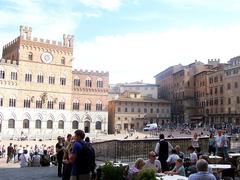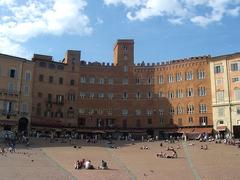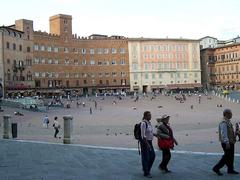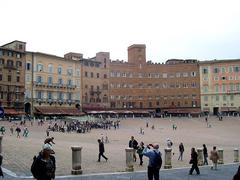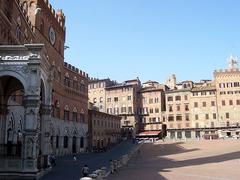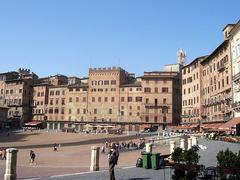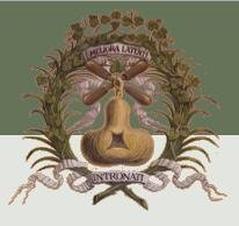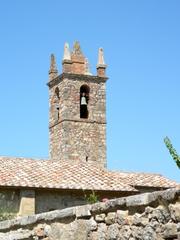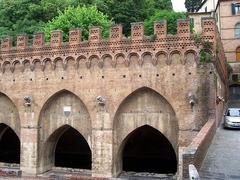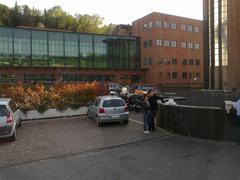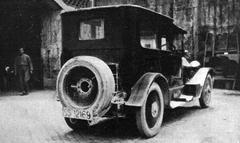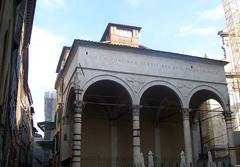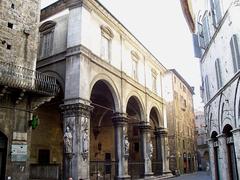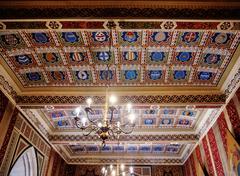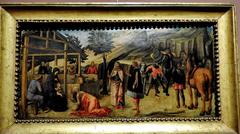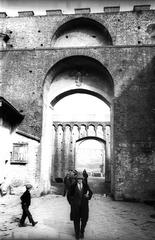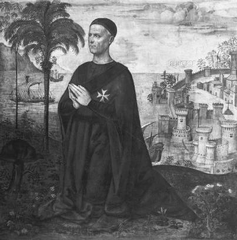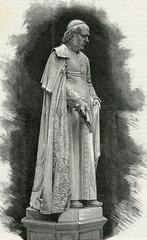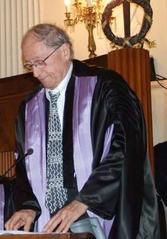
Guide to Visiting Il Campo, Siena, Italy
Date: 16/07/2024
Introduction
Il Campo, also known as Piazza del Campo, is the vibrant heart of Siena, a city nestled in the picturesque region of Tuscany, Italy. Established in the 12th century as a marketplace, this iconic square has evolved into a significant cultural and historical landmark, attracting visitors from around the globe. The piazza’s unique shell-shaped design, divided into nine sections, pays homage to the Council of Nine, the governing body that oversaw Siena’s golden era (Il Campo Design). The architectural marvels surrounding Il Campo, such as the Gothic Palazzo Pubblico and the towering Torre del Mangia, stand as testaments to Siena’s rich medieval heritage (Palazzo Pubblico, Torre del Mangia). Moreover, Il Campo’s role as the venue for the famed Palio di Siena horse race underscores its enduring cultural significance (Palio di Siena). This guide delves into the historical, architectural, and cultural facets of Il Campo, providing practical information for visitors to fully appreciate this remarkable piazza.
Table of Contents
- Introduction
- History of Il Campo
- Visitor Information
- Photographic Spots
- Preservation and Modern Use
- Cultural Impact
- Conclusion
- FAQ
History of Il Campo
Origins and Early Development
Il Campo, the principal public space of Siena, was established in the 12th century as a marketplace. The area was initially a sloping field, hence the name “Campo,” meaning “field” in Italian. Its central location made it accessible to various districts of Siena.
Architectural Evolution
The architectural development of Il Campo began in earnest in the late 13th century. The Sienese government, known as the Council of Nine, initiated several urban planning projects to transform the area into a cohesive public space. The most significant of these projects was the construction of the Palazzo Pubblico, which began in 1297 and was completed in 1310. This Gothic-style building served as the seat of the government and remains one of the most iconic structures in Siena (Palazzo Pubblico).
The Fonte Gaia
One of the most notable features of Il Campo is the Fonte Gaia, a monumental fountain originally constructed in 1346 by Jacopo della Quercia, a renowned Sienese sculptor. The original fountain was replaced in the 19th century by a replica to preserve the delicate sculptures. The Fonte Gaia is celebrated for its intricate carvings and serves as a focal point in the piazza (Fonte Gaia).
The Palio di Siena
Il Campo is perhaps best known for hosting the Palio di Siena, a biannual horse race that dates back to the 17th century. The race is held on July 2 and August 16 each year and involves ten horses and riders representing different districts, or contrade, of Siena. The event is a significant cultural tradition and attracts thousands of spectators from around the world (Palio di Siena).
The Torre del Mangia
Another prominent feature of Il Campo is the Torre del Mangia, a towering structure that stands adjacent to the Palazzo Pubblico. The tower was constructed between 1338 and 1348 and reaches a height of 102 meters (335 feet). It was named after its first bell-ringer, Giovanni di Balduccio, who was known for his gluttonous appetite, earning him the nickname “Mangiaguadagni” or “profit eater” (Torre del Mangia).
The Piazza’s Unique Design
Il Campo is renowned for its unique shell-shaped design, which is divided into nine sections, symbolizing the Council of Nine. The piazza is paved with red bricks arranged in a herringbone pattern, interspersed with travertine marble lines. This design not only enhances the aesthetic appeal of the space but also facilitates drainage, preventing water from pooling during rainstorms (Il Campo Design).
Historical Significance
Throughout its history, Il Campo has been a central gathering place for the people of Siena. It has hosted numerous public events, including festivals, markets, and political gatherings. The piazza has also been the site of significant historical events, such as the public execution of Niccolò di Toldo in 1500, famously depicted by the Sienese painter Domenico Beccafumi (Niccolò di Toldo).
Visitor Information
Tickets and Visiting Hours
Il Campo itself is an open public space and can be visited at any time. However, specific attractions like the Palazzo Pubblico and Torre del Mangia have visiting hours and ticket requirements. The Palazzo Pubblico is usually open from 10 AM to 7 PM, with tickets priced around €10 for adults. The Torre del Mangia has similar hours, with tickets costing approximately €8. It’s advisable to check the official websites for the most current information.
Travel Tips
- Getting There: Siena can be reached via train or bus from major cities like Florence and Rome. Once in Siena, Il Campo is within walking distance from most central locations.
- Accessibility: The piazza is pedestrianized, making it easy for visitors to explore. However, the uneven cobblestone surface might be challenging for those with mobility issues.
- Nearby Attractions: Don’t miss the Siena Cathedral, the Piccolomini Library, and the Museo dell’Opera del Duomo, all located within walking distance of Il Campo.
Special Events and Guided Tours
- Special Events: Besides the Palio di Siena, Il Campo hosts various festivals and public gatherings throughout the year. Check the local event calendar for more details.
- Guided Tours: Several guided tours are available that offer in-depth historical insights and cover multiple attractions in Siena, including Il Campo. These tours can be booked online or through local tour operators.
Photographic Spots
Il Campo offers numerous photogenic spots. The view from the Torre del Mangia is particularly breathtaking, providing panoramic views of Siena and the surrounding Tuscan landscape. The piazza’s unique design, with its red bricks and travertine marble lines, also makes for excellent photography.
Preservation and Modern Use
In the modern era, Il Campo continues to be a vibrant public space, attracting both locals and tourists. Efforts have been made to preserve the historical integrity of the piazza while accommodating contemporary needs. The area is pedestrianized, allowing visitors to explore the space without the interference of vehicular traffic. Various cafes and restaurants line the perimeter of the piazza, offering a place for visitors to relax and enjoy the historic surroundings (Modern Use of Il Campo).
Cultural Impact
Il Campo has had a profound impact on the cultural identity of Siena. The piazza is not only a symbol of the city’s rich history but also a testament to its enduring traditions. The Palio di Siena, in particular, serves as a powerful reminder of the city’s communal spirit and competitive nature. The event fosters a sense of unity and pride among the residents of Siena, reinforcing the importance of Il Campo as a cultural and social hub (Cultural Impact of Il Campo).
Conclusion
Il Campo’s history is a tapestry of architectural innovation, cultural traditions, and historical events. From its origins as a marketplace to its current status as a UNESCO World Heritage site, the piazza has played a pivotal role in the life of Siena. Its unique design, iconic structures, and vibrant cultural events make it a must-visit destination for anyone interested in the rich history and culture of Tuscany (UNESCO World Heritage). Don’t miss the opportunity to explore this remarkable piazza and immerse yourself in the captivating story of Siena.
FAQ
What are the visiting hours for Il Campo?
Il Campo itself is open 24/7. However, specific attractions like the Palazzo Pubblico and Torre del Mangia have set visiting hours, generally from 10 AM to 7 PM.
How much are tickets for Il Campo?
Il Campo is free to visit. Tickets for the Palazzo Pubblico and Torre del Mangia are around €10 and €8 respectively.
Are guided tours available?
Yes, there are several guided tours available that cover Il Campo and other attractions in Siena.
What are some nearby attractions?
Nearby attractions include the Siena Cathedral, the Piccolomini Library, and the Museo dell’Opera del Duomo.
Is Il Campo accessible?
The piazza is pedestrianized, but its cobblestone surface might be challenging for those with mobility issues.
References
- Palazzo Pubblico
- Torre del Mangia
- Fonte Gaia
- Palio di Siena
- Piazza del Campo
- UNESCO World Heritage
- Siena’s History
- Civic Museum Palazzo Pubblico
- Torre del Mangia
- Il Palio
- Fonte Gaia
- Museo Civico
- Torre del Mangia
- Grand Hotel Continental Siena
- Hotel Athena
- B&B Il Corso
- Osteria La Mossa
- Ristorante Il Bandierino
- Antica Trattoria Papei
- Settimana Musicale Senese
- Siena Jazz Festival
- Siena Combined Tickets
